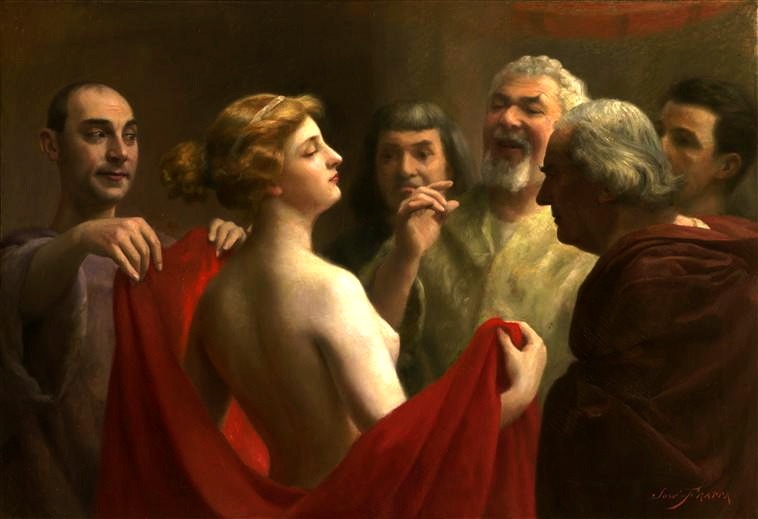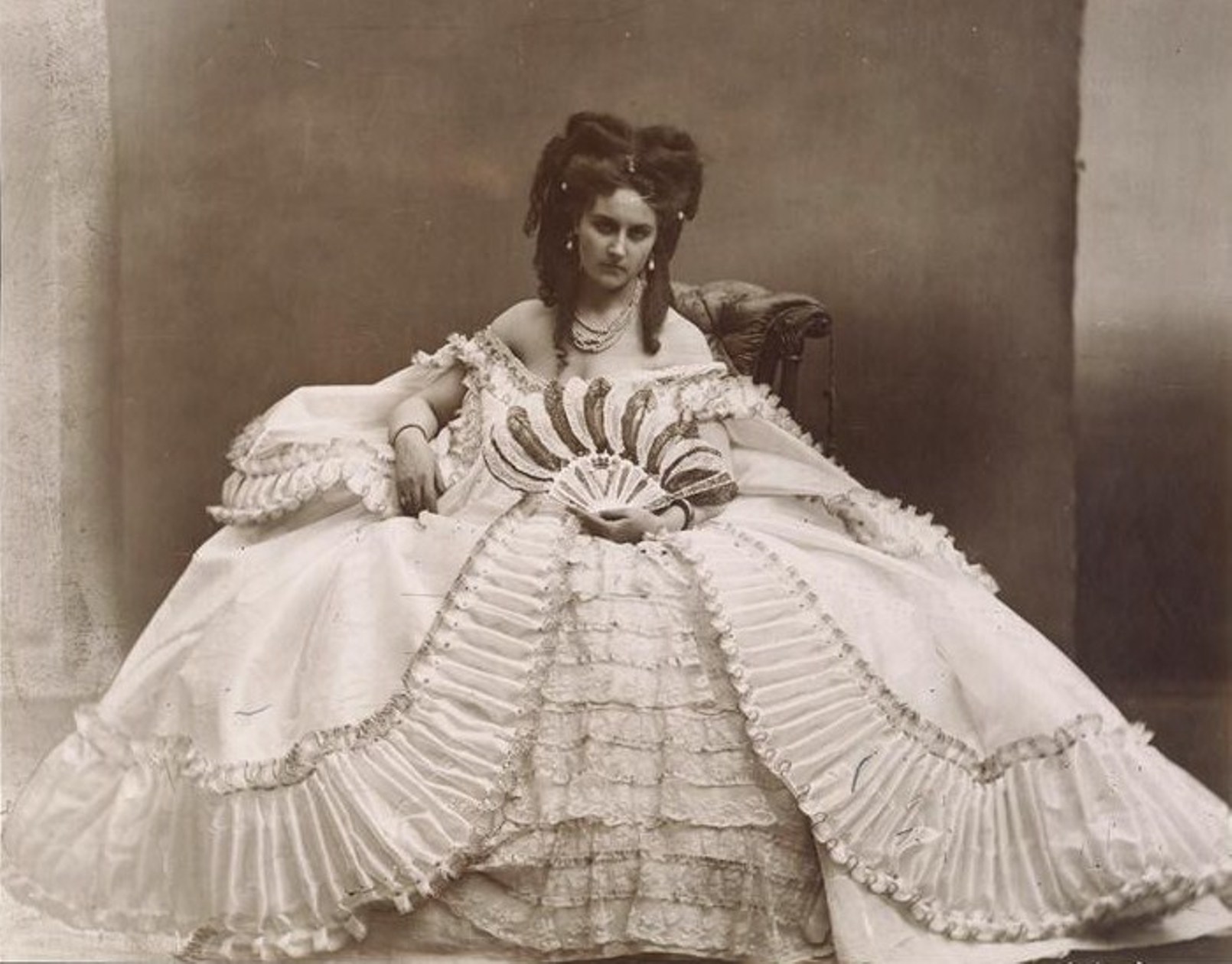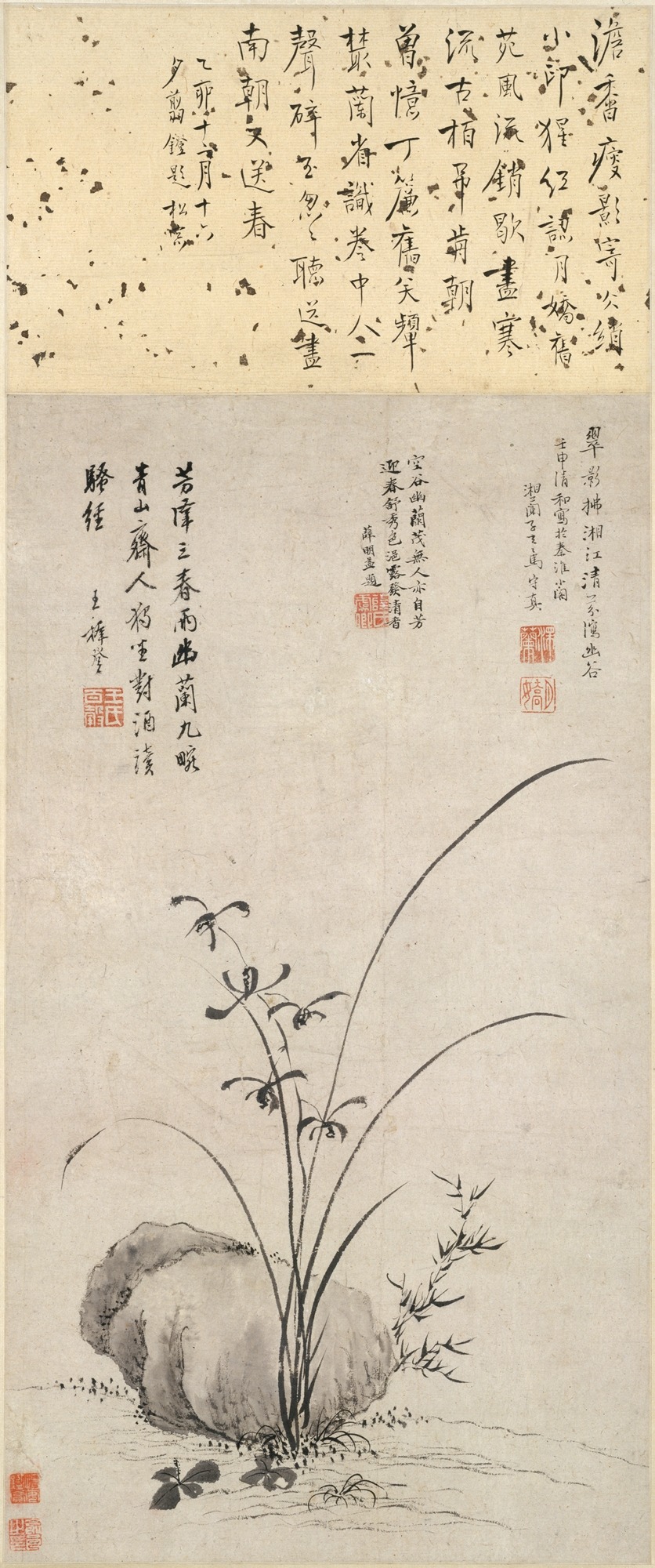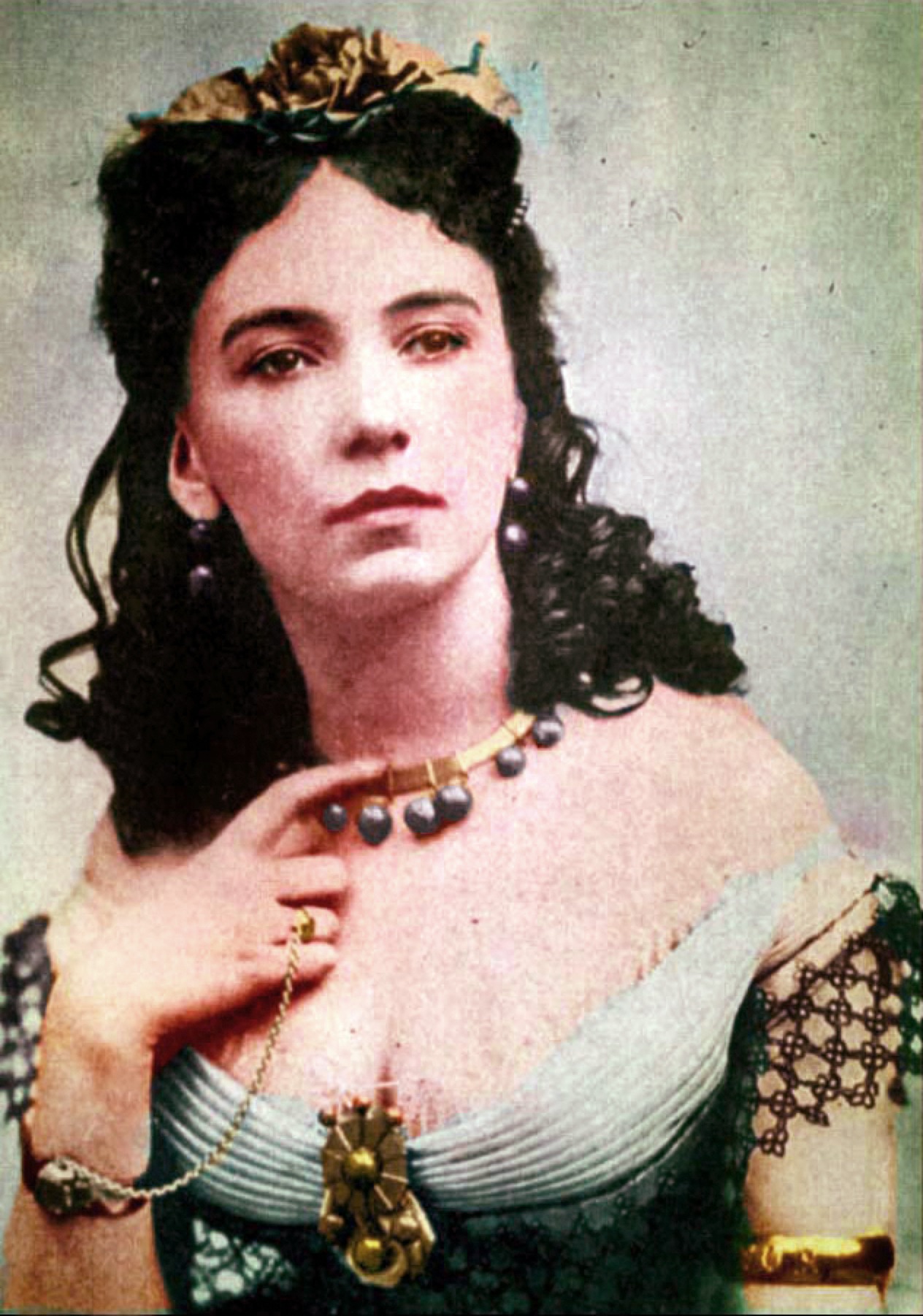Sleeping to the Top

By Shruti Kothari
Staff Writer
2/12/2019

Phryne by Jose Frappa
Whilst prostitution evokes cheap perfume, immorality, and desperation, the courtesan is associated with art, fame, and riches. Although courtesans also offered sexual services, they transcended the boundaries of gender and class. Celebrated in the highest circles, they have upheld tradition, dictated fashion, and, in some cases, amassed vast personal fortunes, contributed to the literary canon, and altered the course of history. If I had to live in the past, I’d choose to be either a queen or a courtesan.
The word “courtesan” originated in 19th century France, but the concept is far older and is common to many civilizations, including ancient Greece, the Abbasid Caliphate, and imperial Japan. Courtesans were often of low birth. Marie Duplessis (1824-47), whose story inspired Verdi’s opera La traviata, was born to a family of Norman peasants. Abandoned by her father in Paris as a teenager, she found work at a dressmaker’s shop. As she bloomed, however, she realized she could trade her company for a much more comfortable life as a lover and mistress to wealthy men. Her paramours included a string of aristocrats, the writer Alexandre Dumas, and the musician Franz Liszt. One of them, Agenor de Guiche, also arranged for her to receive instruction in French, drawing, music, and dance. Her new circumstances enabled Marie to reinvent herself as a high society lady. Eventually, one of her paramours, Comte Edouard de Perregaux, married her, making her a countess.
Theodora (500-48) was born to a bear trainer, and made her way up through a mixture of acting and whoring in Constantinople. A celebrated actress, one of her most memorable performances was a depiction of the story of Leda and the Swan (wherein Zeus, in the form of a swan, has sex with the princess Leda), in which Theodora poured grain on her crotch and had a gaggle of geese peck it off. Educated in the arts, she was also renowned for her wit. She later rose to the position of Empress of the Eastern Roman Empire by becoming the mistress, and later wife, of Justinian I, who inherited the throne from his uncle (being of a decidedly lower class than him, the law had to be changed before they could marry). She never forgot her background, in that, as empress, she helped protect poor women and prostitutes. She later proved her mettle during a revolt in Constantinople. As her husband and his councilors prepared to flee the city and surrender the empire, this redoubtable woman urged him to stay and fight to the death, declaring: “the royal purple is the noblest shroud.” Justinian heeded her words and put down the rebellion, saving his throne.

The Empress Theodora at the Colosseum by Jean-Joseph Benjamin-Constant
Not all courtesans came into their professions through destitution, though. Ninon de l’Enclos (1620-1705), who declared that “Feminine virtue is nothing but a convenient masculine invention,” refused to settle for middle class life, and sealed her fate as a courtesan by allowing her virginity to be taken by an older man, thus rendering herself unfit for marriage and bourgeois domesticity. Her lovers included Gaston de Cligny, the great general Louis II de Bourbon, Prince of Conde, and the writer Francois de La Rochefoucauld. She mastered many languages and hosted salons that were frequented by some of the foremost intellectuals in Paris.
Until recent times, few women have been independently wealthy; Eleanor of Aquitaine may have had a dowry to kill for, and Hatshepsut controlled up to a fifth of the world’s wealth, but both were born into their fortunes, which came with strings attached. Courtesans, though, could enjoy wealth in their own right. Amrapali, the Indian courtesan of the 5th century BC, was so beautiful that even Buddha warned his disciples to be cautious of their feelings around her, and according to scholar Subhadra Mitra Channa, by charging 50 karshapanas (ancient Indian coins) a night, she grew richer than many kings. According to Susan Griffin’s The Book of the Courtesan, the Countess Castiglione of 19th Century France was offered a million francs for a mere 12 hours of her time; she apparently pocketed the cash and sent a friend in her stead.

Virginia Oldoïni, the Countess Castiglione
When Alexander the Great destroyed the wall of Thebes, the Greek courtesan Phryne is alleged by Athenaeus of Naucratis to have offered to foot the bill to rebuild them, with the stipulation that it bear the inscription, “Alexander knocked down this wall, and Phryne the courtesan rebuilt it.” Phryne lived in Athens during the 5th century BC, and was once tried for impiety (a capital charge). When it looked like the verdict would go against her, she bared her breasts to the jurors, who promptly voted to acquit. Perhaps the (all-male) jury, witnessing her full glory, decided it would be a crime to destroy such a work of art. Another explanation is that the ancient Greeks considered beauty a mark of divine favor. Because she was so evidently beautiful, it stood to reason that she couldn’t possibly have been impious. By showing the jurors her naked body, she was in effect asking them: “If I insulted the gods, would they have given me this?” Her beauty and her story have inspired art through the ages, and she is said to have been the model for the famous sculpture, Aphrodite of Knidos.
When it looked like the verdict would go against her, she bared her breasts to the jurors, who promptly voted to acquit.

Phryne before the Areopagus by Jean-Leon Gerome
As accessible women of exceptional beauty, it was common for courtesans to pose for artists (who were occasionally also their lovers). Caravaggio’s sculpture St Catherine, gifted to a cardinal, was modeled on courtesan Fillide Melandroni. Indeed, many of the portraits of ladies through the ages, especially the less modest ones, depict courtesans, rather than family members of the painter or the person commissioning it.
As courtesans were essentially required to be adept in the arts (the Kama Sutra details that they should be proficient in 64 skills, including carpentry, storing water, and mining), they were as often behind the lens as in front of it. The Venetian courtesan Veronica Franco (1546-91), for example, was also a famous poet. The Ming dynasty courtesan Ma Shouzhen (1548-1604) was renowned for painting landscapes; you can see her Orchid and Rock at the Met. Across the board, courtesans received an education that even most noblewomen did not. While men dominated the overt creation and chronicling of history, through courtesans we have a few female voices filtering through in art, music, and poetry. Both because of their schooling and the social circles they moved in, courtesans were uniquely placed to publish and present work at the highest levels of society, just as men were. Without their accounts, very little would remain to show us the historical female perspective.

Orchid and Rock by Ma Shouzhen
The courtesan, held as the feminine ideal, was charged with both the production and upkeep of traditional art forms. The Japanese oiran had to be well versed in Japanese calligraphy, the tea ceremony, the shamisen and koto, and able to play a mean game of igo; this education required heavy investment from the offset. Oiran were so coveted that prospective clients would have to prove their worth over three meetings, during which she would not eat, drink, or talk with them, just observe. An oiran’s social rank was higher than that of her clients and she could accept and reject them at will. In fact, while we see geisha as the pinnacle of traditional Japanese beauty, with intricate makeup, hair, and layers of clothing, they were originally the plain support staff of oiran. Their aesthetic was pared back to better show off the far more accomplished oiran, who were the real stars. However, as their style grew more ostentatious, oiran fell out of favor with changing times. During the privations of WWII, such luxury was frowned upon, and over time approachability, cost efficiency, and simpler attire prevailed; oiran faded into near-extinction and geisha took their place as the rich man’s cultured companion.

Oiran tying her obi by Katsukawa Shunsho
Although adhering to tradition sounds stiff, it was far from it. Poetry, for example, was an interactive affair, like the original rap battle. The deceptively named Classical Poems by Arab Women, by Abdullah al-Udhari, includes excerpts from the famous 9th century Middle Eastern courtesan, Fadl al-Sha’irah. While technically a slave, she was widely respected. When a male poet insinuated she wasn’t a virgin, and said he preferred virgins as they were like unpierced pearls, she saucily responded:
Riding beasts are no joy to ride until they’re bridled and mounted,
So pearls are useless unless they’re pierced and threaded.
The heady combination of attention, security, and education, at a time when women were seen largely as broodmares, made courtesans bold. The famed Korean courtesan Hwang Jini (1506-60) posed a riddle to any man who wanted to be her lover – and granted her favors only to those who could solve it. Cora Pearl (1836-86), obscenely wealthy darling of 19th century France, was told by her guests that her dinner menu was always so exquisite they couldn’t imagine her serving anything distasteful. She laughed and said she’d serve them meat of the finest quality that they wouldn’t be able to eat. Soon after, several men brought a covered silver platter into her dining room. The lid was lifted to reveal Pearl herself, lying naked, artfully garnished with a few leaves of parsley.

Cora Pearl
Courtesans sometimes played politics. Louis XIV was so dazzled by the political prowess of courtesan Ninon de l’Enclos, that when she wasn’t present, he would often ask, “What would Ninon do?” Nell Gwyn, lover of King Charles II, disappointed that he did not give their illegitimate son a title, dangled the baby out of the window upon which the terrified king yelled, “God save the Earl of Burford!” Veronica Franco used her charms to help persuade Henry III of France into turning Venice’s luck by sending troops to help fight the Ottomans. Madame du Barry, mistress of Louis XV, saved the Comte and Comtesse de Lousene from beheading by getting on her knees in front of her lover and refusing to get up until he agreed to spare them. While she may have saved their heads, she helped the royal family (and many other people) lose theirs.
A necklace commissioned for Madame du Barry set off a series of events that helped precipitate the French Revolution. Louis XV died before the extravagant diamond piece was complete, and his son and successor, Louis XVI, banished du Barry from court, leaving the jewelers floundering for a buyer. They tried to sell it to Marie Antoinette many times, eventually turning to the shady Jeanne de Valois, who claimed close friendship with the queen. Although Jeanne ended up scamming the jewelers and absconding with the necklace, and Marie Antoinette never agreed to buy it, a rumor spread that the queen had tried to defraud the jewelers, deepening the people’s dislike of the monarchy. The Affair of the Diamond Necklace, as it came to be called, is thought to have contributed to the outbreak of revolution.

Louis XV and du Barry by Gyula Benczur
Modern-day versions of courtesans do exist. The high-class escort is still prominent in society; scandals like that involving Silvio Berlusconi’s exorbitant spending on call girls emphasize that. A tall, blonde friend of mine from Brown moved to Bangkok some years ago as a kindergarten teacher and took up escorting on the side through a website. Although this city is bursting with local options, she was both expensive (up to $1,000 a night) and popular; often she was simply asked to attend parties, sometimes in different countries. But high-class escorts don’t enjoy the same mystique courtesans did; they’re not coveted and celebrated in the same way, and rarely does a man lose his family fortune, his kingdom, or his head over their affection.
High-class escorts don’t enjoy the same mystique courtesans did.
Perhaps the modern version of the courtesan would be the famous songstress or actress. These women set trends, enjoy great wealth, and have hordes of adoring fans, and, as with Marilyn Monroe and Madonna, their sexuality is an important part of their appeal. While talent does of course play an important role, the film industry is notorious for having a seedy, sexual side to it, and the Harvey Weinstein scandal highlighted the expectations imposed upon young women looking to enter Hollywood.
However, the disgust with which the casting couch is now viewed indicates why the sun is setting on the mystique of the courtesan. Modern, emancipated women theoretically have the same paths to success available to them as men. They no longer need to use sex to succeed. In fact, anyone who’s even suspected of sleeping their way up is often frowned upon or even ostracized, like Monica Lewinsky.
There is a difference between using sex to further your profession, and sex being an intrinsic part of your profession, as with a prostitute. True courtesans straddled that distinction, because underlying the glamour were the confines of gender. Courtesans were part of the same fight for gender equality that rendered their role redundant. Stars sparkle in the dark, but they fade in the light.
